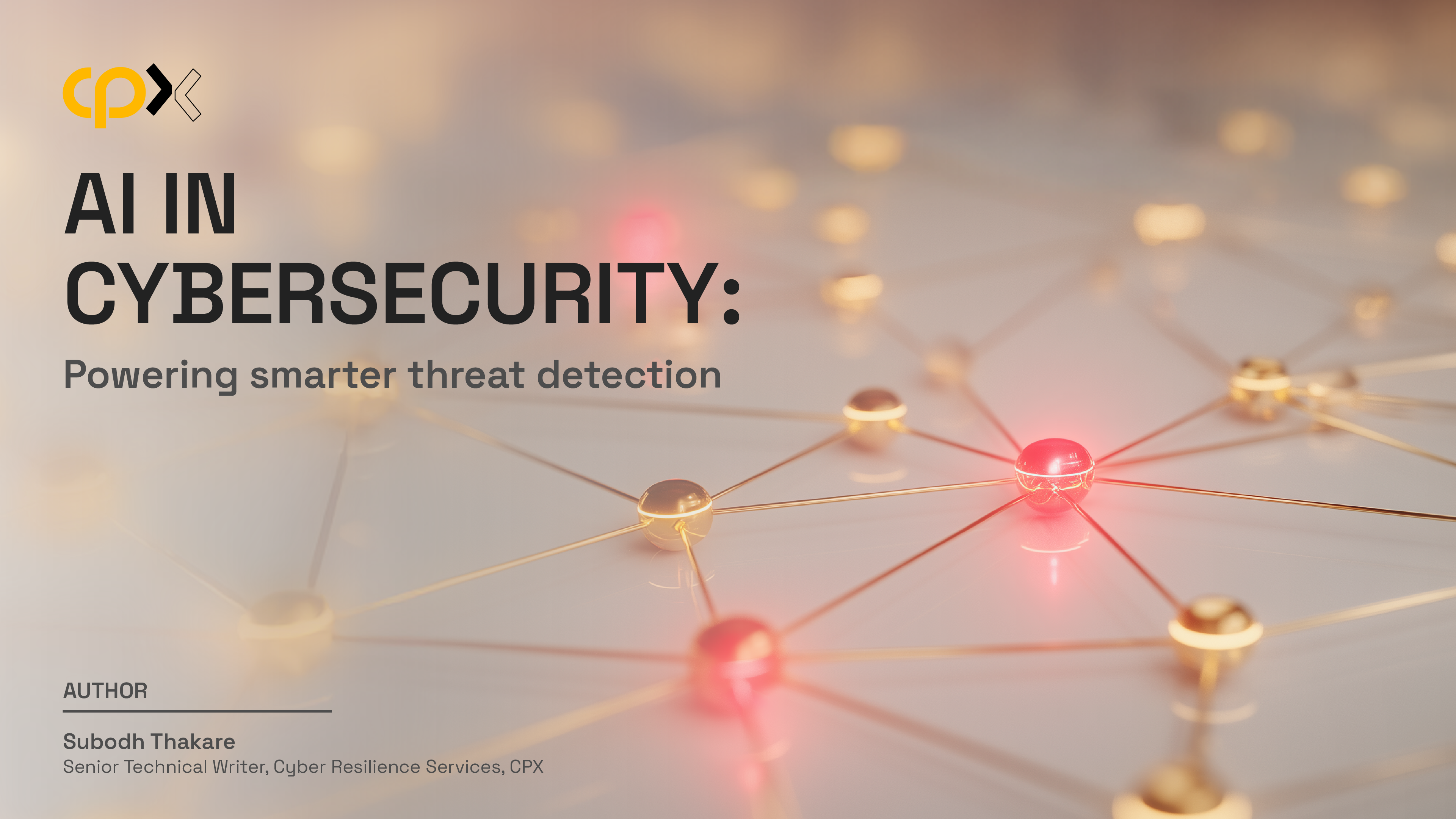
Cyber threats and attacks are becoming more frequent, complex, and difficult to detect. As hackers and attackers use sophisticated techniques to surpass defenses and launch the attack, traditional cybersecurity tools are finding it difficult to identify, monitor, and prevent these attacks. These tools just play a catch-up game.
In today’s high-stake environment, Artificial Intelligence is emerging as a power packed tool to detect, monitor and respond to cybersecurity threats faster and with great accuracy.
Why traditional threat detection tools fall short
Despite their fundamental role, traditional cybersecurity solutions and tools are falling short to quickly detect and tackle evolving and advanced cybersecurity threats. Here’s why:
- Too many false positives: Legacy systems usually report multiple alerts, few of which are harmless and unnecessarily overwhelm security teams and divert focus from actual threats.
- Inability to detect unknown threats: Signature-based threat detection techniques usually fail to identify and catch hold of zero-day attacks or unseen threat patterns.
- Delayed incident response: Manual workflows or human-driven analysis usually slows down the process to detect, monitor, and respond to the threats, giving attackers extra advantage.
- Static rule-based models: Predefined rules fail to accept new attacks, making it easier for them to bypass.
- Siloed visibility: Traditional cybersecurity tools may be enough only to monitor basic threats, lacking the broader technology required to recognize complex, synchronized cyber-attacks.
How AI works in cybersecurity
Artificial Intelligence and Machine Learning revolutionize threat detection by constantly learning from real-time and historical data. These models investigate network traffic, user behavior, and system logs and establish a reference of normal activity. The system can then automatically flag harmful anomalies, whether it’s a system login attempt at an odd business hour or a sudden rise in outbound data.
Unlike traditional tools, AI-powered tools adapt to real-time evolving patterns, making it effective especially in identifying advanced, sophisticated and subtle attacks, by analyzing millions of data points in seconds. AI assists security teams in risk-based prioritization of threat detection.
Key AI-driven techniques that support this intelligence
- Anomaly detection: Identifies abnormal behavior such as unauthorized access to accounts or large number of data files getting downloaded.
- Supervised learning: AI trains traditional models with labeled data to identify and classify similar threats in the future, e.g., known malware behavior.
- Behavior analysis: Monitors entity and user behaviors to detect compromised accounts or threats.
- Smarter threat detection with AI: AI makes threat detection proactive and context aware.
Real-world scenarios where AI plays a critical role
- Sensitive data transfer: Machine Learning algorithms play a vital role in flagging large data transfers to unrecognized IP addresses, triggering mechanized containment protocols.
- Unusual login detection: AI detects unusual login attempts from any foreign IPs, different from the user’s typical login pattern, thereby alerting the security team.
- Phishing email identification: AI scans all inbound emails, detects malicious links, language patterns, and blocks phishing attempts even before the user sees them.
This proves that AI doesn’t wait for attacks to strike, it proactively prevents them by identifying early indicators.
Benefits of using AI in threat detection
AI integration into cybersecurity offers several strategic advantages:
- Real-time threat detection: AI minimizes dwell time by proactively identifying threats, by not waiting for certain damage to happen.
- Faster incident response: Automated prioritization and analysis assure faster containment and remediation.
- Reduced false positives: Smarter filtering enables security teams to focus on actual threats rather than wasting time in chasing harmless false alerts.
- Scalable protection: AI-enabled smarter threat detection models monitor thousands of data streams and endpoints simultaneously without any manual intervention.
- Continuous learning: AI models, with continuous learning and advancements, become more effective and accurate at detecting threats.
Conclusion
As cyber threats are becoming more sophisticated and dynamic, AI is no longer a futuristic idea. It is rather a necessity, a must-required evolution in modern cybersecurity. At CPX, by enabling intelligent and real-time threat detection, our AI solutions empower organizations to stay one step ahead of attackers and proactively protect any data, confidential information, company assets, and users against attacks and threats with greater confidence.
Are you ready to practice smarter threat detection in your organization?
Talk to our experts to explore how AI-driven threat detection can strengthen your cybersecurity posture today.
